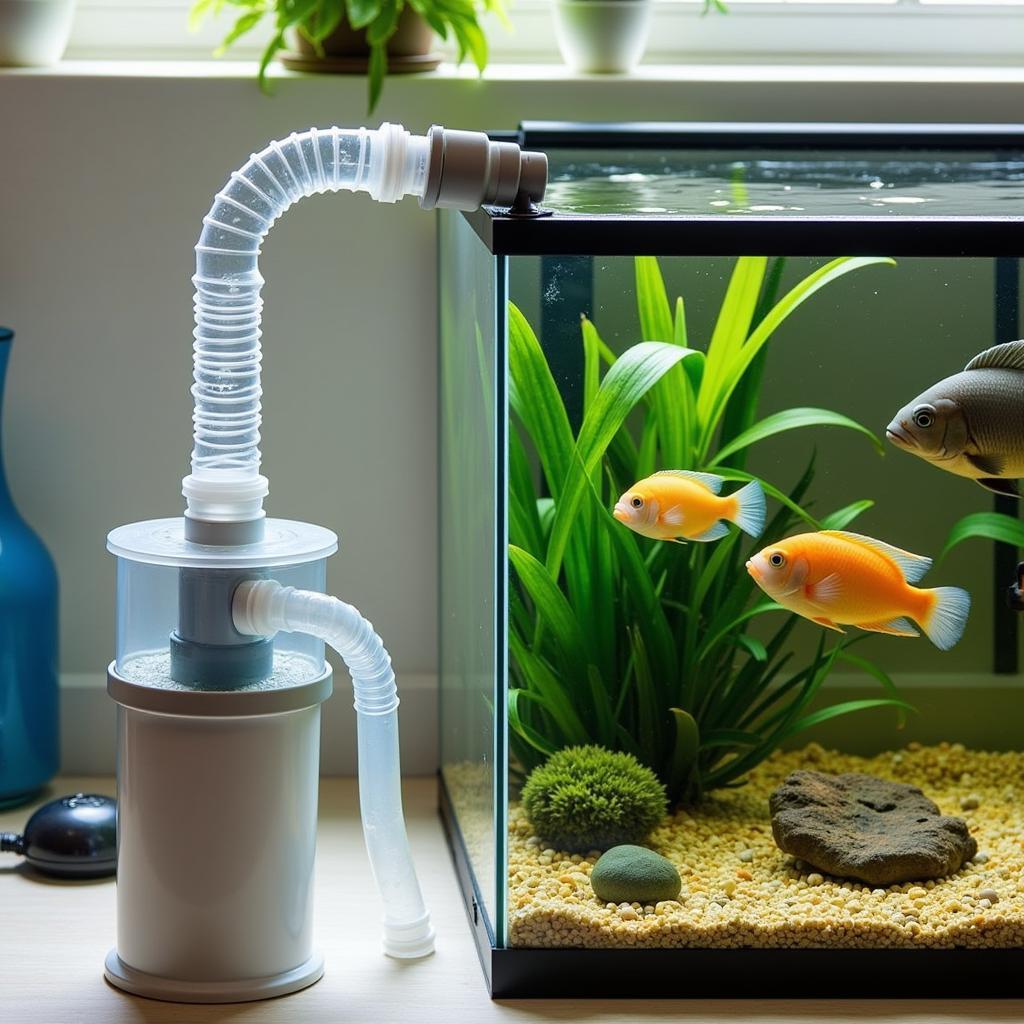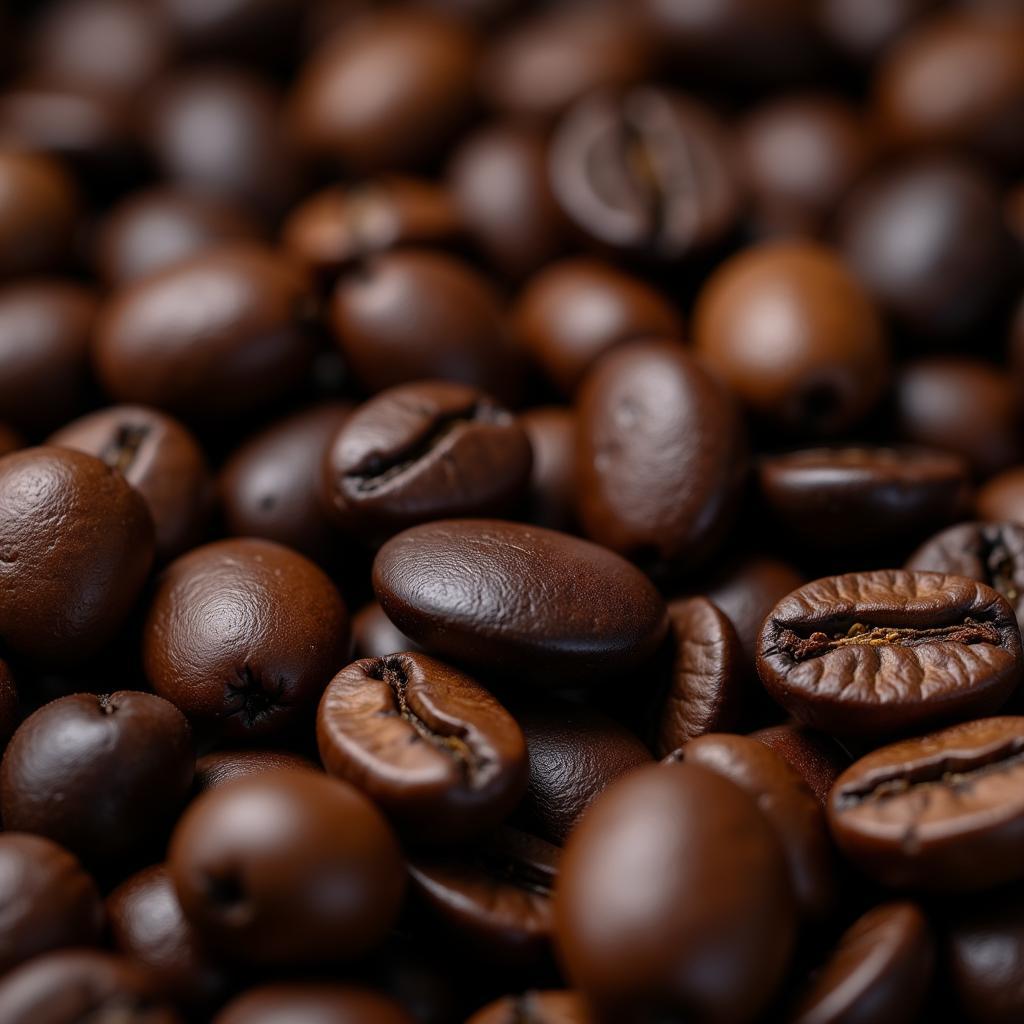The Ultimate Guide to African Cichlid Canister Filter Media
Choosing the right filter media for your African cichlid tank is crucial for maintaining a healthy and thriving aquatic environment. African cichlids are known for their vibrant colors and active behavior, but they are also heavy waste producers. This means that your filtration system needs to be efficient in removing harmful toxins and maintaining optimal water quality. This guide will delve into the world of African Cichlid Canister Filter Media, providing you with the knowledge to make informed decisions for your aquarium.
 African cichlid tank with a canister filter setup
African cichlid tank with a canister filter setup
Understanding Canister Filters and Media
Canister filters are popular among African cichlid enthusiasts for their powerful filtration capabilities and versatility. Unlike hang-on-back filters that sit on the tank’s rim, canister filters are external units connected to the tank via hoses. This design allows for greater media capacity and more efficient filtration.
Filter media refers to the materials placed inside the canister filter that facilitate mechanical, biological, and chemical filtration. Each type of media targets specific contaminants, working together to maintain pristine water conditions for your cichlids.
Types of African Cichlid Canister Filter Media
1. Mechanical Filtration Media
Mechanical filtration is the first stage of the filtration process, responsible for removing large debris and particulate matter from the water column. This prevents clogging in the subsequent filter stages and improves water clarity.
- Filter Pads/Floss: These are typically made of polyester or filter wool and act as a physical barrier to trap large particles like uneaten food, fish waste, and plant debris.
- Coarse Sponges: These provide excellent mechanical filtration while also offering some surface area for beneficial bacteria to colonize.
2. Biological Filtration Media
Biological filtration is arguably the most crucial stage, as it cultivates beneficial bacteria colonies that convert harmful ammonia and nitrite into less toxic nitrate.
- Ceramic Rings: These porous rings provide a massive surface area for nitrifying bacteria to thrive, ensuring efficient biological filtration.
- Bio Balls: Similar to ceramic rings, bio balls offer ample surface area for bacterial colonization.
- Matrix Filter Media: These highly porous media provide an even greater surface area than ceramic rings or bio balls, making them ideal for heavily stocked cichlid tanks.
 Various filter media used in aquariums
Various filter media used in aquariums
3. Chemical Filtration Media
Chemical filtration helps remove dissolved impurities, odors, and discoloration from the water, further enhancing water quality.
- Activated Carbon: Known for its ability to absorb dissolved organic compounds, heavy metals, and medications, making the water crystal clear.
- Purigen: This synthetic adsorbent is highly effective in removing organic waste and helps control ammonia, nitrite, and nitrate levels.
- Seachem Phosguard: Specifically designed to remove excess phosphates, which can contribute to algae growth.
Choosing the Right Media Combination
The key to successful African cichlid canister filtration lies in finding the optimal combination of mechanical, biological, and chemical media. While there’s no one-size-fits-all solution, a good starting point is:
- First stage: Mechanical filtration using filter pads or coarse sponges.
- Second stage: Biological filtration using ceramic rings, bio balls, or matrix media.
- Third stage: Chemical filtration with activated carbon or Purigen.
Remember to arrange the media in the order mentioned above, ensuring that water flows through the mechanical filtration stage first, followed by biological and chemical filtration.
african cichlid tank setup ideas
Maintenance and Cleaning
Regular maintenance of your canister filter and its media is essential for optimal performance.
- Rinse mechanical media: Every 2-3 weeks, gently rinse the mechanical filtration media (filter pads, sponges) in removed tank water to remove trapped debris. Avoid using tap water, as it can kill beneficial bacteria.
- Partial replacement: Replace a portion (25-30%) of the mechanical media every 4-6 weeks to maintain efficiency.
- Avoid cleaning biological media: Biological media should not be cleaned or replaced unless absolutely necessary (e.g., heavily clogged). Disturbing the bacterial colonies can disrupt the nitrogen cycle and harm your cichlids.
- Replace chemical media: Chemical filtration media, like activated carbon, needs replacement every 4-6 weeks as they lose their effectiveness over time.
Tips for Optimizing Your Filtration System
- Overfiltration is better: Aim for a filter with a flow rate of at least 5-7 times the volume of your tank.
- Regular water changes: Perform weekly water changes (25-30%) to remove nitrates and replenish essential minerals.
- Monitor water parameters: Test your water regularly for ammonia, nitrite, nitrate, pH, and other vital parameters to ensure optimal water quality.
“A well-maintained filtration system is paramount to the health and vitality of African cichlids. Don’t underestimate the importance of choosing the right filter media and adhering to a regular maintenance schedule,” says Dr. Joseph Mwangata, a renowned aquarist specializing in African cichlid care.
Conclusion
Selecting the appropriate African cichlid canister filter media and understanding its maintenance are essential steps in creating a thriving aquatic environment for your cichlids. By investing in a quality filter, using the right media combination, and following a consistent maintenance routine, you can ensure that your African cichlids live long, healthy, and vibrant lives.
FAQ
1. How often should I clean my African cichlid canister filter?
The cleaning frequency depends on various factors like bioload and feeding habits. However, rinsing the mechanical media every 2-3 weeks and partially replacing it every 4-6 weeks is a good starting point.
2. Can I use tap water to clean my filter media?
No, tap water contains chlorine and chloramine, which can be harmful to the beneficial bacteria in your filter. Always use removed tank water or dechlorinated water for cleaning.
3. What are the signs of a poorly functioning canister filter?
Signs include cloudy water, foul odors, increased fish illness, and elevated ammonia/nitrite levels.
4. Can I add too much filter media to my canister filter?
Overfilling the canister filter can restrict water flow and reduce filtration efficiency. It’s crucial to follow the manufacturer’s recommendations for media capacity.
5. My water is still cloudy even with a canister filter. What should I do?
Cloudy water can indicate a bacterial bloom or an issue with your filter media. Check your water parameters and consider a water change or filter media adjustment if necessary.
Need more help with your African cichlids? Contact us at +255768904061, email us at [email protected] or visit us at Mbarali DC Mawindi, Kangaga, Tanzania. We’re available 24/7 to assist you.


